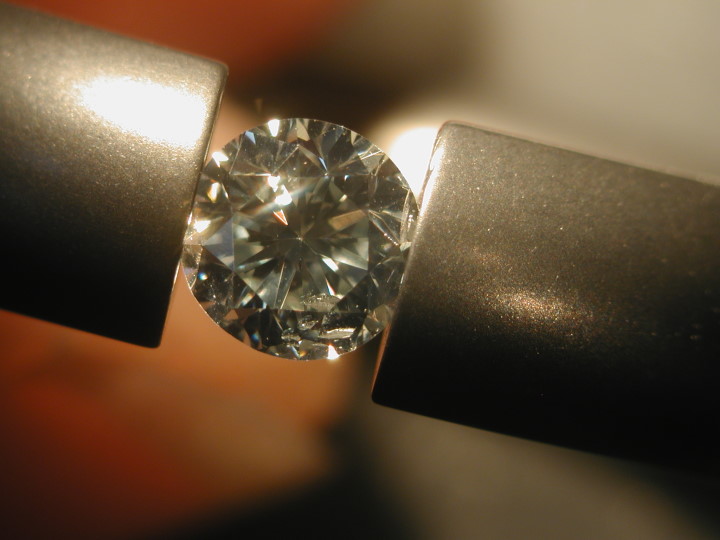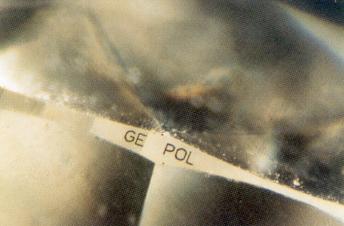
Especially brownish type IIa diamonds are suitable for high pressure high temperature (HPHT) treatment
Image: K. Sieber, www.makrogalerie.de
For some time now, attempts have been made to influence the color of diamonds using HPHT technology. In the case of turquoise, this had already been achieved earlier with the Zachery process.
In early 1999 General Electric (GE) announced the developement of a HPHT process to decolorize Diamonds. The distribution of these enhanced diamonds was handled by the Antwerp-based company Pegasus Overseas Limited (POL). Accordingly, the treated stones were named »GE POL« Diamonds. The details of the process are confidential and according to General Electric will continue to be kept secret.
The HPHT method turns brown or brownish natural diamonds into colorless stones. This technology does does not work for all types of Diamonds. Only diamonds with extremely low or or zero nitrogen content (type IIa) turn colorless. This type covers only 1 percent of the diamond production worldwide. Beside this, only very pure stones can be treated successfully. Under the required high pressure of more than 50 kilobar and the high temperature of more than 1,800 degrees Celsius, even small inclusions produce tension cracks, which reduce the value of the stone or even destroy it.
In the beginning it was difficult to determine, if a stone had been HPHT treated or not. Standard gemological methods give indications only but not a definite proof. That is why in the beginning of 1999 the Gemological Institute of America (GIA) made an agreement to graduate all gemstones treated by General Electric and mark them with the laser engraving "GE POL" on the girdle. But this label can be removed relatively easily by repolishing.

Extensive research has yield reliable methods to clearly identify GE POL Diamonds. UV-VIS and IR spectrometers can be used to detect an increased nitrogen content not present in natural type IIa diamonds. Raman spectroscopy and thermoluminescence analysis provide additional information.
Using these methods unmarked colorless HPHT treated diamonds from Russia have been discovered. It is all but unknown for how long these Russian stones have been on the market and if there are any other manufacturers out there.



